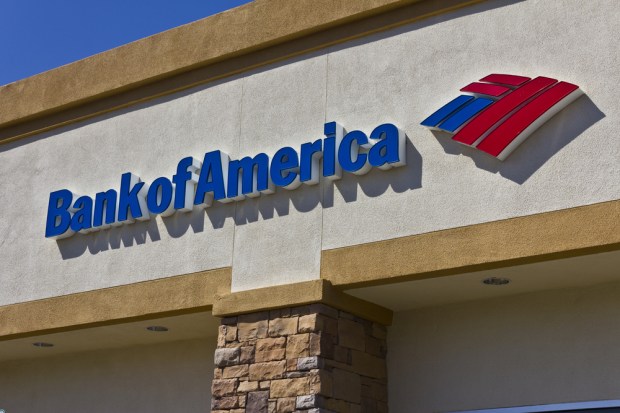BoA Beats Street on Consumer Biz; Mobile Use Grows

The second-biggest bank by assets, Bank of America, said Tuesday that earnings were up on gains in all businesses beyond trading, according to the latest quarterly results.
The company said that its top line came in at just over $23 billion, better than consensus at $21.8 billion. The earnings per share came in at 46 cents, better than consensus by three pennies. In terms of business units, trading, as measured by the global markets business, was down and probably expected by the Street. That reflects a larger trend at work that has bedeviled peers, with a slide in bond trading behind the decline, off 14 percent to $2.1 billion.
Net interest income was up 8.6 percent year over year to just under $11 billion, as the Federal Reserve continued to boost rates. Average deposits grew by four percent year on year, and average loans and leases across business segments were up five percent from last year.
The consumer business, as management pointed out during a conference call with analysts, helped offset the trading segments, and then some.
CEO Brian Moynihan pointed out during the call that the company was being mindful of “responsible growth” driven by investments in both people and in technology. Numbers reflected in supplemental earnings materials showed that the consumer segment generated $2 billion in net income, up from a recent string of $1.6 billion to $1.7 billion quarters as measured in the second quarter of each of the last few years. At the same time, net chargeoffs have declined over the same timeframe to $0.8 billion from $0.9 billion.
The customer profile has changed a bit too, with total digital banking users growing from 30 million in the second quarter of 2014 to about 34 million in the most recent quarter. Within that tally, mobile banking users were 22.9 million, up from 15.5 million through the same span. Increasingly, evidence shows that consumers are comfortable with using technology while banking, with 21 percent of transactions being done over mobile, up from 10 percent three years ago. At the same time, total payments done digitally were $322 million, up from $252 million in 2014. All of this comes as the financial centers, as in bricks and mortar, came in at 4,542, down from roughly 5,000 in 2014.
Turning to credit quality, provisions for losses declined slightly, with consumer net chargeoffs the lowest level seen in a decade, as noted by management. The net chargeoff ratio was 40 basis points, down from 44 basis points in the second quarter of 2016. Debit and credit spending was up six percent, to a purchase volume of $128.8 billion.
